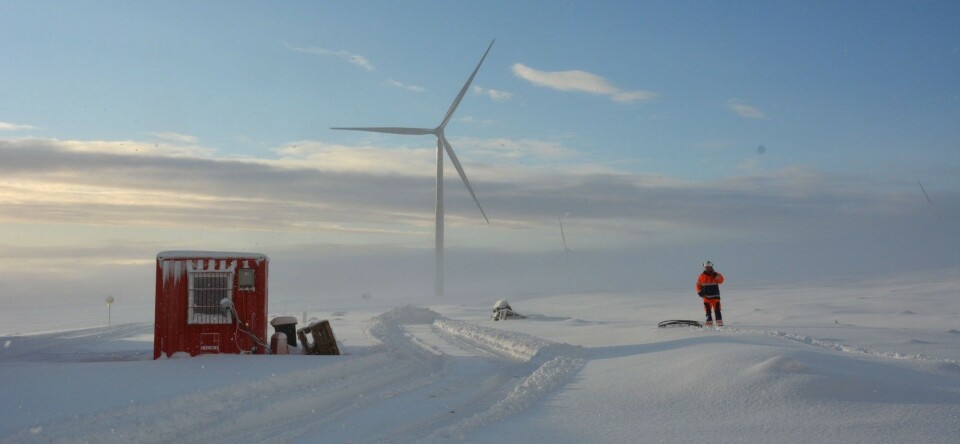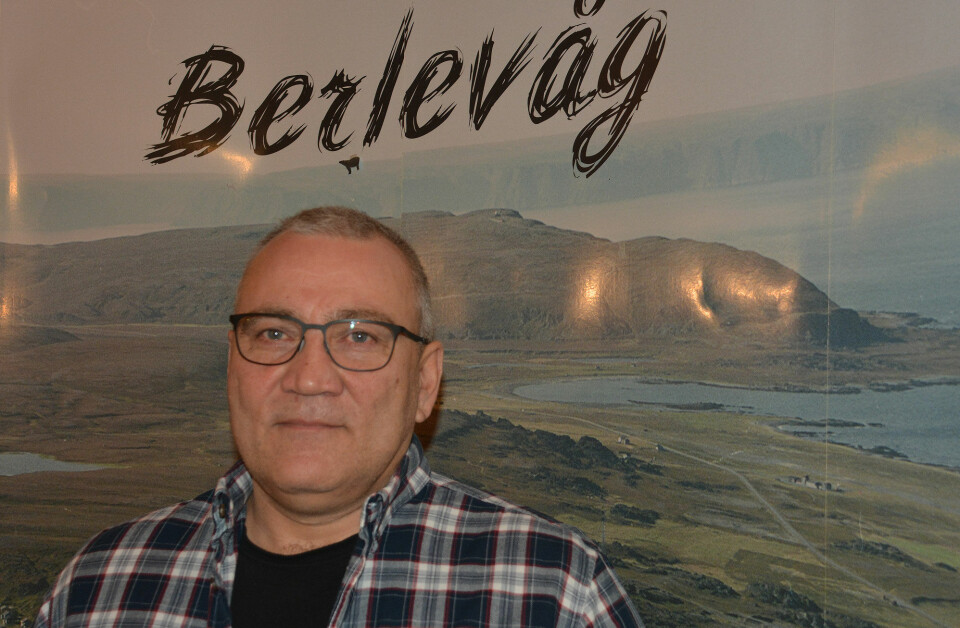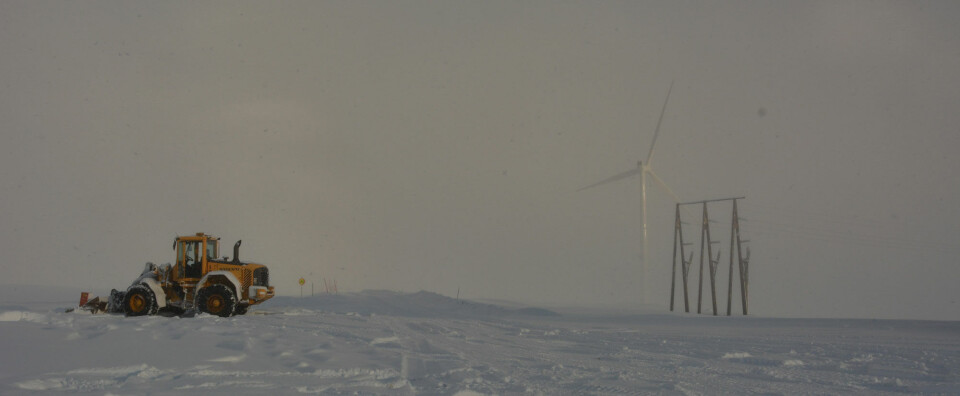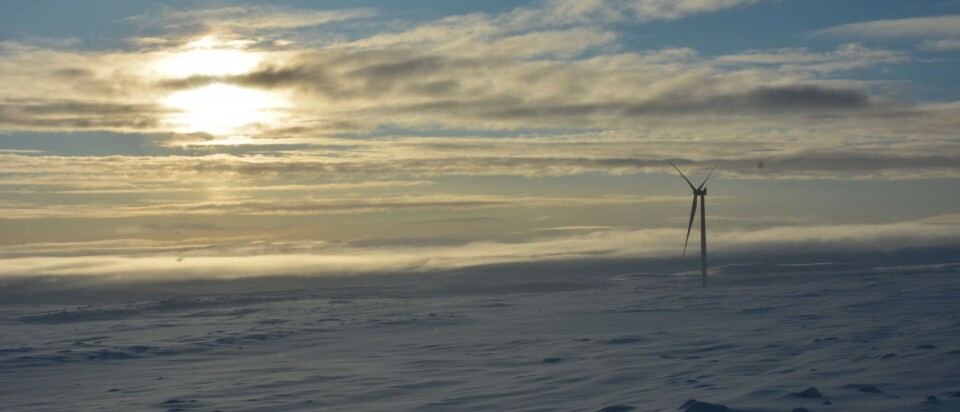
The ice cold Arctic winds of Berlevåg might propel the world towards a great green shift
The power generated at the local wind farm in Berlevåg is to be used to produce hydrogen and green ammonia. Industry developers believe the far northern town will develop into a hub for renewable energy that ultimately can offer zero emission fuel to ships operating in northern waters.
From the Berlevåg town administration, Kjell Richardsen has a view towards the local seaport and the breakwater that protects the small town from the freezing and rough Barents Sea.

Richardsen is one of the people in charge of the local business development program that ultimately could turn this stormy outpost on the desolate Barents coast into a vibrant center for renewable energy generation and new green business.
This is where we intend to build the Berlevåg Industrial Park, he says and points on the map at a 820 acre area located just outside the town center.
Ambitions are high for a town with less than thousand inhabitants. Along its rocky shores, Richardsen and the Berlevåg Municipality intend to pave the way for a range of new business developments, all based on renewable energy. Plans are supported by regional authorities and several powerful companies are catching interest.
“All must be green and renewable, and part of a circular economy,” he underlines to the Barents Observer.
More than fish
For centuries, fisheries have been the core industry for the small town located on Norway’s far northern Varanger Peninsula. Every year local fishermen pull up 15,000 tons of cod and other fish from the vastly rich Barents Sea
But in the future, Berlevåg could get a far more diversified economy.

Wind power and green ammonia
The basis for it all is the Raggovidda wind farm. On top of the nearby mountain stand 15 turbines that in 2019 produced at total of 191 GWh. Next year, another 12 turbines will be built and bring capacity to almost 100 MW. Later, the total capacity will grow to 200 MW.
Strong cold winds from the Barents Sea normally gush over the mountain that has the shape of an overturned boat. Since the Raggovidda farm opened in 2014 it has been among the most efficient wind parks in the world.
The average capacity factor is as high as 48-49 percent, says Tore Martinsen, leader of Varanger KraftWind.
Climate is rough.
“Production is very efficient, but conditions challenging,” says Martinsen. “There is a lot of snow, it is cold, windy and much bad weather,” he underlines.
“A high level of winter competence is essential for the operations,” he explains.
A key share of the additional power generated at Raggovidda is planned used to produce hydrogen. And that hydrogen is to be used for production of green ammonia. It has triggered the interest of several major industrial companies.
Wärtsilä, Aker Solutions, Kværner, Grieg Star, DFDS, Equinor and others are now looking at ways to materialize the plans. Under their joint ZEEDS Initiative, the companies intend to use green fuel to create a zero emissions shipping industry.
The green ammonia of Berlevåg could be a key starting point.
Stranded wind
The idea to generate hydrogen in Berlevåg was born out of a lack of regional infrastructure. The electricity grids in this northernmost part of Norway do currently not have capacity to transmit all the power produced by the wind farm.
With the production of hydrogen, the company found a way to deal with the problem. In 2017, it teamed up with European partners in the EU-funded Haeolus project and in late 2020 test production is due to start on site.
Production of hydrogen is a great way to store excess wind energy, says Tor Einar Løkke Pedersen.
But hydrogen can also be used as chemical for further conversion, and in October this year Varanger Kraft announced that it intends to generate also green ammonia.

The green ammonia can be used as fuel for big ships, including the ones shipping in Arctic waters and the Northern Sea Route, the company argues
“It is actually not difficult to produce ammonia when you have hydrogen, Løkke Pedersen underlines. Green ammonia can also be used as energy source at Svalbard, he explains and points at Norwegian government plans to revamp the coal-based energy systems at the far northern archipelago.
According to the company, up to 120,000 tons of green ammonia will be produce per year from 2025. Later, that production might be doubled.
“Berlevåg is situated far north, but its location is actually very central when it comes to the possibility to fuel north-bound ship transport, as well as Svalbard,” Løkke Pedersen says.

“This is not the periphery, it is becoming the center.”
Green spinoff
Kjell Richardsen from the Berlevåg municipality is thrilled about the opportunities that now open for his small town.
Ever since it was decided to build a local wind farm, he has been at the center of developments. Reportedly, it was he himself that first came up with the idea to produce hydrogen from the excess power from Raggovidda.

He now eyes a number of spinoffs that could help turn the negative demographic trend that for decades has troubled Berlevåg.
The hydrogen and ammonia plants will themselves not create many jobs, but Richardsen sees a great number of new business establishments taking advantage of the easily available new local energy.
According to Richardsen, the Berlevåg Industrial Park could ultimately include a wide range of new companies engaging in fields such as logistics, fish processing, fish farming, tourism and food production.
“We lose 40 percent of energy when producing hydrogen, and that energy comes in the form of heat and warm water that can be used by others,” he underlines. “And hydrogen production will give also a lot of clean oxygen,” he adds.
Richardsen dreams about the building of a “green laguna” tourism project, leaning on the experiences of the Icelandic Blue Laguna. And he is confident that it will be possible to do large-scale production of vegetables from greenhouses.
The ambition is to make Berlevåg a better place and the world a bit more clean.
“We want to make people like it here, and we want to contribute with making society and the world greener,” the local developer underlines.

















